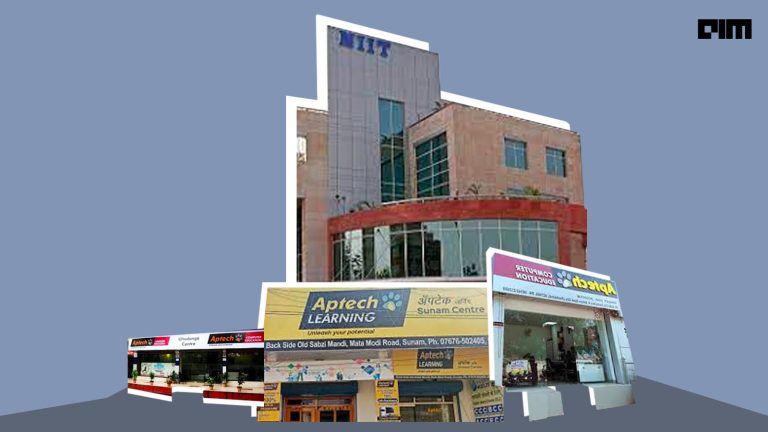With Simplilearn’s foray into television advertising, there’s been a lot of renewed interest in online learning. And more importantly, what differentiates ‘variety’, ‘marketplace’ players like Simplilearn, Edureka or Coursera from the more ‘focused’ domain experts like Jigsaw Academy, Code Academy or Free Code Camp.
To understand the difference between the two a little better, it’s important to outline what constitutes a ‘marketplace’. VCCircle defines a marketplace as “platforms that enable a large, fragmented base of buyers and sellers to discover price and transact with one another in an environment that is efficient, transparent and trusted.” When applied to e-learning platforms, these ‘buyers and sellers’ happen to also be ‘teachers and students’. Essentially, any seller/teacher who feels that they have sufficient knowledge of any topic can upload a course for students/ buyers to purchase and learn from. The result being a sense of democracy – where students feel they are ‘choosing’ the teacher they want to learn under for a certain course. The most obvious advantage of the ‘marketplace’ model of online education, is that they are able to offer a range of courses at low prices, making certification easy and accessible to students from different economic backgrounds.
Internationally, traditional online education marketplaces offer that breadth of courses at fixed prices, using a subscription-based model. A student would sign up using a credit card that would automatically be charged, every month, after a trial period. This would give him or her access to all the content on the site. This is how MOOCs (Massively Open Online Courses) like Lynda or Pluralsight work.
Indian education marketplaces, however, have not yet caught on to the subscription model, and students have to enroll for each course separately. There is no single sign-on that lets you access as many courses as you want for a fixed sum every month. So although they do claim to be education marketplaces, they’re not really ‘marketplaces’ in the sense of how traditional learning marketplaces like Lynda or Pluralsight work.
A single window environment on the other hand provides more focused learning –. With a single platform, students do not have the illusion of choice, but instead learn from curated content carefully chosen by the institute. There is usually a lot more emphasis on crafting a learning path for each student, and also on the long-term goal of employability using the skills learned in the course.
Lets do a head-on comparison and see which factors work in favor of which type of online education offering.
- FOCUS & CHOICE – A focused single window platform offers curated content with a single instructor whereas a marketplace offers range, and variety of courses for different domains.
- COSTS – A single window course usually has to price itself higher since there are significant costs associated with production, standardization and quality. On the other hand, since marketplaces are essentially competitive, course costs can range from extremely cheap to moderately high.
- LONG-TERM GOAL – Marketplaces will often focus on certification, whereas the end goal for a single window online learning platform is usually employability and creating job-ready individuals. This makes it easier for professionals to plan for success in their careers.
- HELP & SUPPORT – On marketplaces, support and help functions are usually restricted to platform usage and accessibility since they cannot necessarily connect students with individual course creators. However, on single window platforms, they can span the entire learning experience – right from signing up right to possible job placement. Since the student has a single reference point throughout the entire learning process, it is easier (for them to get the kind of individualized, hands-on attention that they need).
- TYPE OF LEARNING – Due to the kind of long-term goals they set, most single window platforms usually concentrate on hands-on, real-world skills, often posing the kind of domain-specific problems that students would face in a real workplace. Marketplaces, for their part, are usually more comfortable covering just the theoretical aspects of a course or topic.
- FACULTY REACH – Faculty connect and interactions are completely dependent on their schedules in the case of marketplaces, but when they are embedded as part of the platform as in a single window situation, the connect is stronger and more consistent. There is usually an assured level of commitment one would find in a single-window online school that is often missing in a marketplace.
- QUALITY – Due to different course creators and producers, marketplaces struggle to maintain consistent quality standards. However, since most single window platforms have creative control over the content that they offer, and can enforce rigorous production standards, they are more likely to ensure medium to high-quality output. Marketplaces often struggle to ensure consistent quality because they aren’t end-to-end service providers.
So, although marketplaces seem to have the upper hand with respect to variety, choice, and in most cases affordability … they’re not necessarily the best if you’re truly interested in genuinely upgrading your skills. They’re more the weapons of choice if your company requires mandatory formal ‘certifications’, but with no plans for you to actually put to use any of the course learning.
If you truly want to take charge of your career–by becoming more valuable to the company you’re working for or changing professions—it’s best to go to experts. Online learning platforms like Code Academy and Jigsaw Academy are truly your best bet when it comes to building skills that you can put to immediate use at the workplace, to get ahead.




















































































